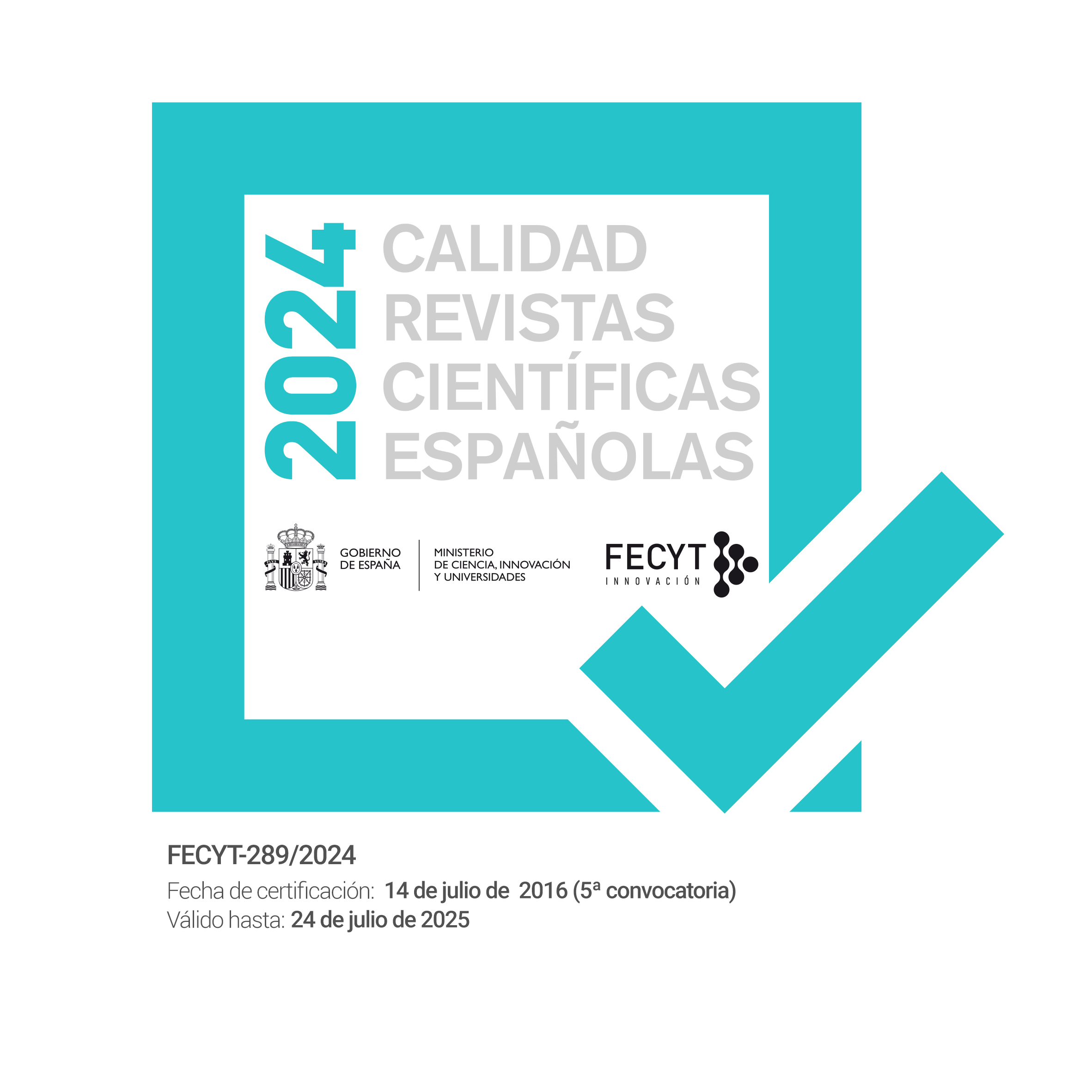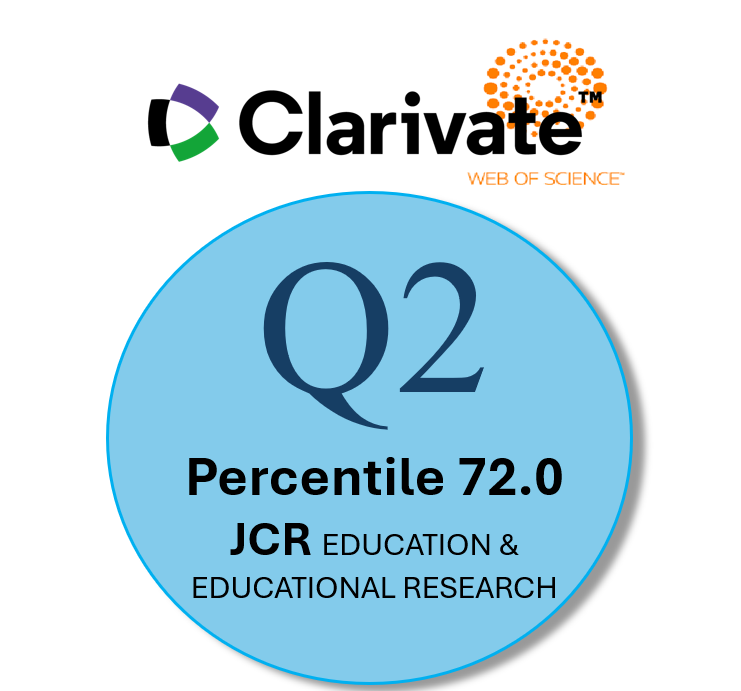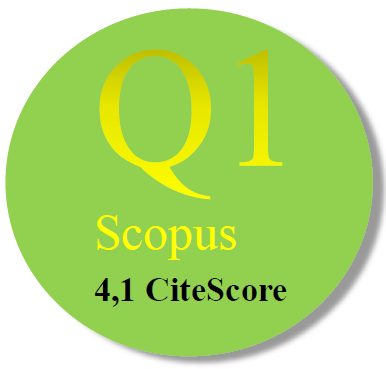Augmented reality and its effect on the spatial ability of mechanical engineering students
Abstract
This research work focused on the development of a learning experience based on the use of augmented reality with the aim of improving spatial ability, within the training framework of the future mechanical engineer. Two groups were formed, where the first group, the experimental group, participated in a mechanical drawing workshop where content was displayed in augmented reality, while, in the second group, the control group developed the same topics in a traditional way. A test was used to measure the spatial ability of the participants before and after the application of the workshop. The results obtained in the study allowed us to conclude that the mechanical drawing workshop based on the use of augmented reality significantly influences the spatial ability of mechanical engineering students, because the statistical analysis allows us to identify a significant difference between the groups formed, according to results obtained by means of the Mann Whitney U test.
Downloads
-
Abstract1774
-
PDF (Español (España))1063
References
Barroso-Osuna, J., Gutiérrez-Castillo, J. J., Llorente-Cejudo, M. C., & Valencia-Ortiz, R. (2019). Difficulties in the incorporation of augmented reality in university education: Visions from the experts. Journal of New Approaches in Educational Research, 8(2), 126–141. https://doi.org/10.7821/NAER.2019.7.409
Bishop, J. (1978). Developing Students’ Spatial Ability. The Science Teacher, 45(9), 20–23.
Cabero-Almenara, J., & Roig-Vila, R. (2019). The Motivation of Technological Scenarios in Augmented Reality (AR): Results of Different Experiments. Applied Sciences, 9(14), 1–16. https://doi.org/10.3390/APP9142907
Chang, S. C., & Hwang, G. J. (2018). Impacts of an augmented reality-based flipped learning guiding approach on students’ scientific project performance and perceptions. Computers and Education, 125, 226–239. https://doi.org/10.1016/j.compedu.2018.06.007
Del Cerro-Velázquez, F., & Lozano-Rivas, F. (2019). Proyecto Técnico Ecourbano apoyado en las TIC para el aprendizaje STEM (Dibujo Técnico) y la consolidación de los ODS en el aula. Revista de Educación a Distancia (RED), 19(60). https://doi.org/10.6018/RED/60/04
Del Cerro-Velázquez, F., & Morales-Méndez, G. (2017). Realidad Aumentada como herramienta de mejora de la inteligencia espacial en estudiantes de educación secundaria. Revista de Educación a Distancia (RED), 54. https://doi.org/10.6018/red/54/5
Del Cerro-Velázquez, F., & Morales-Méndez, G. (2021a). Application in Augmented Reality for Learning Mathematical Functions: A Study for the Development of Spatial Intelligence in Secondary Education Students. Mathematics, 9(4), 369. https://doi.org/10.3390/math9040369
Del Cerro-Velázquez, F., & Morales-Méndez, G. (2021b). Systematic review of the development of spatial intelligence through augmented reality in stem knowledge areas. Mathematics, 9(23). https://doi.org/10.3390/MATH9233067
Gardner, H. (1986). Frames of Mind: The Theory of Multiple Intelligences. Basic Books.
Gómez-García, G., Rodríguez-Jiménez, C., & Marín-Marín, J. A. (2019). La trascendencia de la Realidad Aumentada en la motivación estudiantil. Una revisión sistemática y meta-análisis. Alteridad, 15(1), 36–46. https://doi.org/10.17163/ALT.V15N1.2020.03
Guntur, M. I. S., Setyaningrum, W., Retnawati, H., & Marsigit. (2020). Can augmented reality improve problem-solving and spatial skill? Journal of Physics: Conference Series, 1581(1). https://doi.org/10.1088/1742-6596/1581/1/012063
Hegarty, M. (2010). Components of Spatial Intelligence. Psychology of Learning and Motivation - Advances in Research and Theory, 52(C), 265–297. https://doi.org/10.1016/S0079-7421(10)52007-3
Hernández, R., Fernández, C., & Baptista, P. (2014). Metodologia de la investigacion. McGraw-Hill.
Hinojo-Lucena, F. J., Aznar-Díaz, I., Cáceres-Reche, M. P., & Romero-Rodríguez, J. M. (2019). Opinión de futuros equipos docentes de educación primaria sobre la implementación del mobile learning en el aula. Revista Electronica Educare, 23(3), 1–17. https://doi.org/10.15359/ree.23-3.14
Huerta, O., Kus, A., Unver, E., Arslan, R., Dawood, M., Kofoǧlu, M., & Ivanov, V. (2019). A design-based approach to enhancing technical drawing skills in design and engineering education using VR and AR tools. Proceedings of the 14th International Joint Conference on Computer Vision, Imaging and Computer Graphics Theory and Applications, 3, 306–313. https://doi.org/10.5220/0007566003060313
McGee, M. G. (1979). Human spatial abilities: Psychometric studies and environmental, genetic, hormonal, and neurological influences. Psychological Bulletin, 86(5), 889–918. https://doi.org/10.1037/0033-2909.86.5.889
Oliveros-Ruiz, M. A. (2021). Panorama of teaching in higher education institutions under science, technology, engineering and mathematics (STEM) programs. Revista Científica, 40(40), 2–12. https://doi.org/10.14483/23448350.16764
Otzen, T., & Manterola, C. (2017). Técnicas de Muestreo sobre una Población a Estudio. International Journal of Morphology, 35(1), 227–232. https://doi.org/10.4067/S0717-95022017000100037
Pellas, N., & Kazanidis, I. (2019). Developing and Assessing Augmented Reality Applications for Mathematics with Trainee Instructional Media Designers: An Exploratory Study on User Experience. Journal of Universal Computer Science, 25(5), 489–514. https://doi.org/10.3217/jucs-025-05-0489
Prit-Kaur, D., Mantri, A., & Horan, B. (2018). A Framework Utilizing Augmented Reality to Enhance the Teaching–Learning Experience of Linear Control Systems. IETE Journal of Research, 67(2), 155–164. https://doi.org/10.1080/03772063.2018.1532822
Ramey, K. E., & Uttal, D. H. (2017). Making Sense of Space: Distributed Spatial Sensemaking in a Middle School Summer Engineering Camp. Journal of the Learning Sciences, 26(2), 277–319. https://doi.org/10.1080/10508406.2016.1277226
Ramírez-Montoya, M. S., & García-Peñalvo, F. J. (2017). La integración efectiva del dispositivo móvil en la educación y en el aprendizaje. Revista Iberoamericana de Educación a Distancia, 20(2), 29–47. https://doi.org/10.5944/RIED.20.2.18884
Revelo-Rosero, J. E., Revuelta-Dominguez, F. I., & González-Pérez, A. (2018). Modelo de integración de la competencia digital del docente universitario para su desarrollo profesional en la enseñanza de la matemática – Universidad Tecnológica Equinoccial de Ecuador. EDMETIC, 7(1), 196–224. https://doi.org/10.21071/edmetic.v7i1.6910
Rodríguez-Cardoso, Ó. I., Ballesteros-Ballesteros, V. A., & Lozano-Forero, S. (2020). Tecnologías digitales para la innovación en educación: una revisión teórica de procesos de aprendizaje mediados por dispositivos móviles. Pensamiento y Acción, 28, 83–103. https://doi.org/10.19053/01201190.N28.2020.11192
Rodríguez-Valenzuela, P. (2020). La realidad aumentada como experiencia de enseñanza-aprendizaje constructivista. Tecnología & Diseño, 9(13), 37–43. https://revistatd.azc.uam.mx/index.php/rtd/article/view/74
Ruiz-Blanco, S., Ruiz-San Miguel, F. J., & Galindo-Arranz, F. (2016). Los millennials universitarios y su interacción con el social mobile. Fonseca, Journal of Communication, 12(12), 97–116. https://doi.org/10.14201/FJC20161297116
Shawky, A., Elbiblawy, E., & Maresch, G. (2020). Spatial ability differences between students with a math learning disability and their other normal colleagues. Journal of Humanities and Applied Social Sciences, 3(3), 182–198. https://doi.org/10.1108/JHASS-01-2020-0016
Wang, M., Callaghan, V., Bernhardt, J., White, K., & Peña Rios, A. (2018). Augmented reality in education and training: pedagogical approaches and illustrative case studies. Journal of Ambient Intelligence and Humanized Computing, 9(5), 1391–1402. https://doi.org/10.1007/S12652-017-0547-8
Copyright (c) 2022 Distance Education Journal

This work is licensed under a Creative Commons Attribution-NonCommercial 4.0 International License.
Las obras que se publican en esta revista están sujetas a los siguientes términos:
1. El Servicio de Publicaciones de la Universidad de Murcia (la editorial) conserva los derechos patrimoniales (copyright) de las obras publicadas, y favorece y permite la reutilización de las mismas bajo la licencia de uso indicada en el punto 2.
2. Las obras se publican en la edición electrónica de la revista bajo una licencia Creative Commons Reconocimiento-NoComercial-SinObraDerivada 3.0 España (texto legal). Se pueden copiar, usar, difundir, transmitir y exponer públicamente, siempre que: i) se cite la autoría y la fuente original de su publicación (revista, editorial y URL de la obra); ii) no se usen para fines comerciales; iii) se mencione la existencia y especificaciones de esta licencia de uso.
3. Condiciones de auto-archivo. Se permite y se anima a los autores a difundir electrónicamente las versiones pre-print (versión antes de ser evaluada) y/o post-print (versión evaluada y aceptada para su publicación) de sus obras antes de su publicación, ya que favorece su circulación y difusión más temprana y con ello un posible aumento en su citación y alcance entre la comunidad académica. Color RoMEO: verde.













